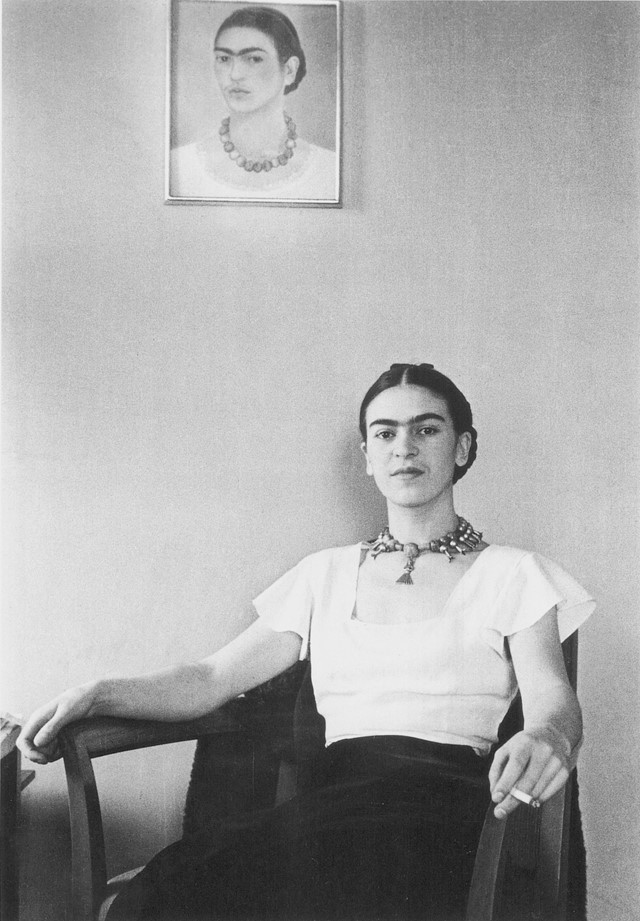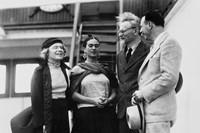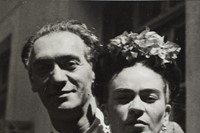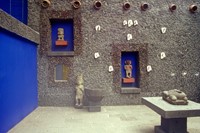An evocative new book documents the life of the renowned Mexican artist through the spaces she inhabited over her lifetime, and it's a glorious riot of animals, gifts, gardens and artworks
As cultural commentators, we’re often reluctant to describe important figures from history as ‘homebodies’, preferring instead that they travel the world in search of their individual fulfilment. When it comes to Frida Kahlo, however – as with many of her similarly revolutionary female peers – it is in part because of her affiliation with her home that her legacy has become so powerful. One only need look to Georgia O’Keeffe’s New Mexico farmhouse, or Ray Eames’ role in creating she and husband Charles’ eponymous modernist LA landmark, to see how, in the hands of women artists, the domestic is swiftly and organically transformed into the iconic.
Kahlo’s case is nonetheless an extraordinary one. Confined for large stretches of her life to a sickbed, first in her childhood home and later in the Casa Azul, or Blue House at Coyoacán, her home was at once a sanctuary, a studio, a palace and a prison, displaying all the paraphernalia of a prolific artist and animal lover alongside those of a woman confined. This autumn, a new book published by Frances Lincoln celebrates the profound pleasure Kahlo took in arranging and organising her various homes throughout the course of her 47 years; Frida Kahlo at Home is a voluptuous celebration of the life and work of the artist, viewed through the prism of her various residences. In its pages, decorative artworks become a highly curated archive, and the development and use of different rooms a biographical progression.
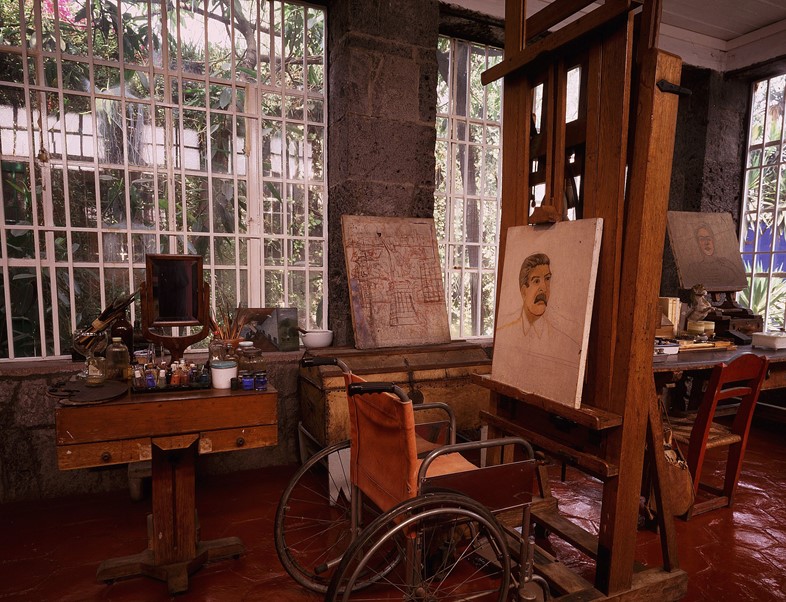
Take the author, Suzanne Barbezat’s description of Kahlo’s living spaces, for example; it is well-documented that Kahlo took great pleasure in transforming her home into a haven of colourful chaos, filled with animals and leafy green foliage, artwork and gifts. “Frida decorated with folk art and preferred traditional Mexican furniture, linens and dishes,” she writes in Frida Kahlo at Home. “She and Diego continued to add to their collections, filling their home with objects made by Mexican hands. Large Judas figures hung in the corners of the rooms, and a calavera skeleton rested on the canopy above her bed. Throughout the house, chairs and beds had cushions embroidered with sweet messages such as ‘Despierta corazon dormido’ (Awake, sleeping heart). Fresh flowers cut from the garden were arranged in earthenware vases, bringing the colours and scents of the garden inside the house. They stored their belongings in Olinalá boxes and chests, decorative lacquerware from the state of Guerrero. Paintings by artists they admired, as well as some of their own works, were displayed on the walls. The photograph Nick Muray took of Frida in her magenta rebozo hung in her bedroom. Frida owned hundreds of ex-votos, and she also collected toys and dolls. Whenever one of her friends went on a trip, she asked them to bring back a toy for her collection.” Pictured over and over again in the book’s pages, it’s something to behold.
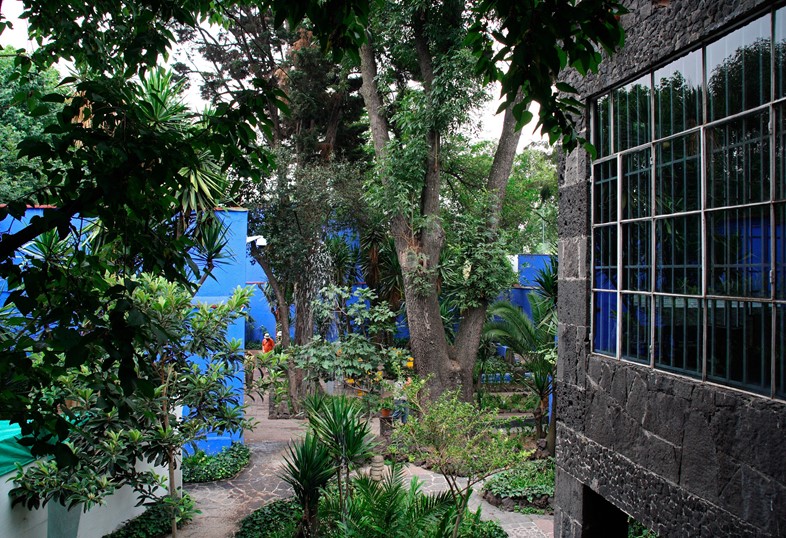
The Blue House was donated to the people of Mexico upon her husband Diego Rivera’s death in 1957, and remains open to visitors to this day, allowing passers-by and pilgrims alike to experience her effect on it firsthand. It fell to Mexican poet and curator Carlos Pellicer, a longtime friend of Kahlo’s, to arrange and preserve the house to receive its first visitors in 1958; although it appears more or less unchanged he was conscientious, if reluctant, in putting in place measures to protect it from wear.
Recognising the gravitas of such an undertaking, once he had finished, Pellicer composed a letter to the late Kahlo, asking her forgiveness. “I finished arranging your house yesterday,” he writes; “we’ll see if you don’t pick a fight with me about it when you come back. In the room that you used to use as your studio and in which you painted so many marvellous things, I hung some of your paintings…”
Frida Kahlo at Home by Suzanne Barbezat is out now, published by Frances Lincoln.
